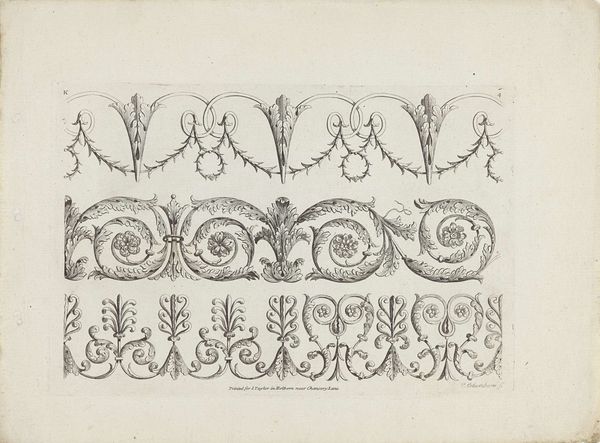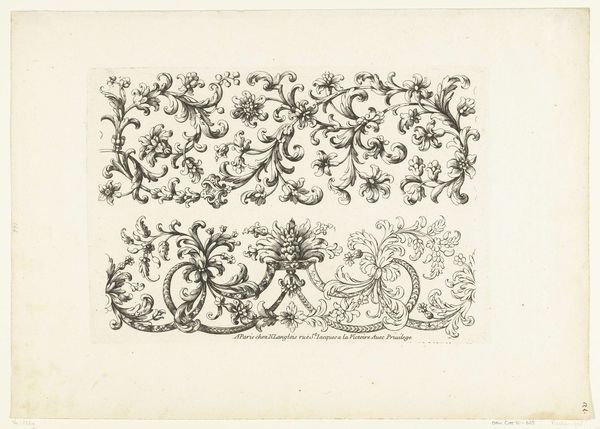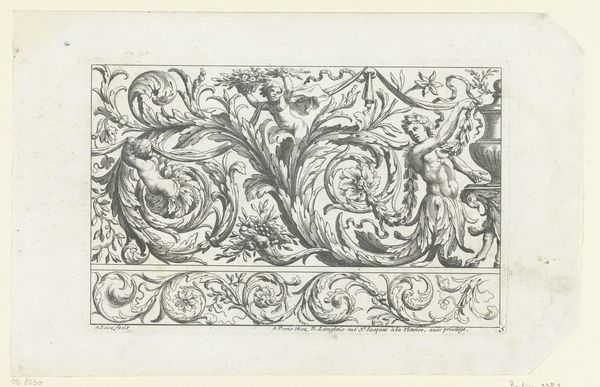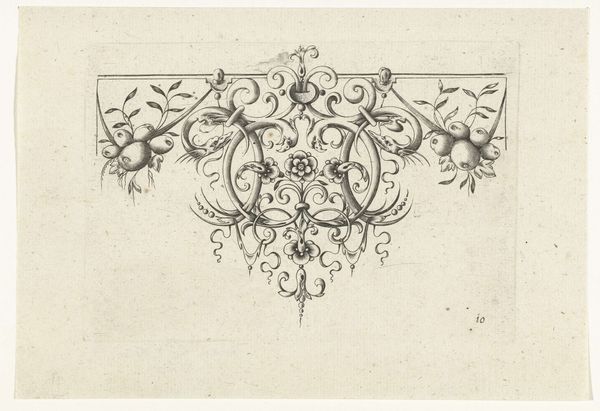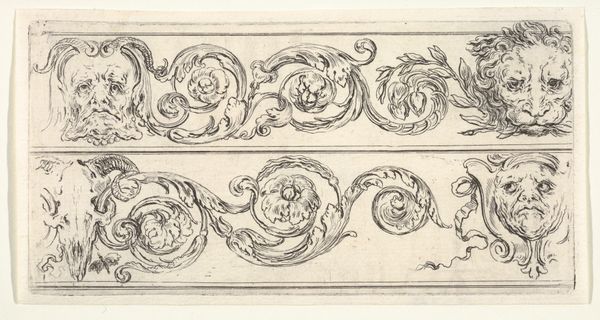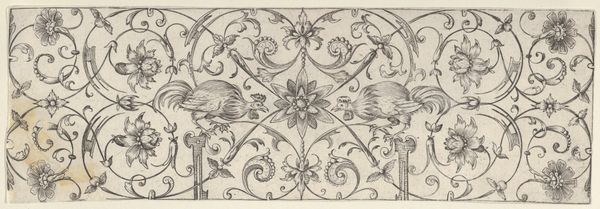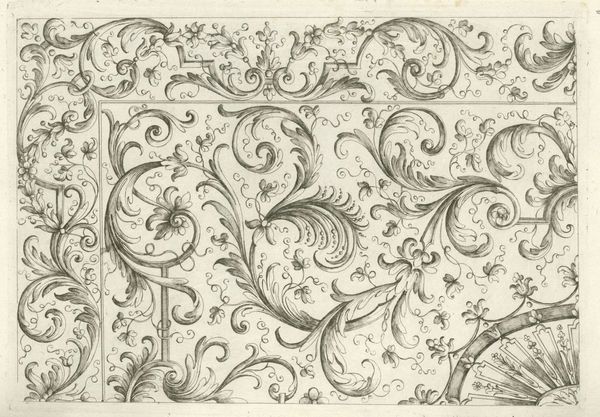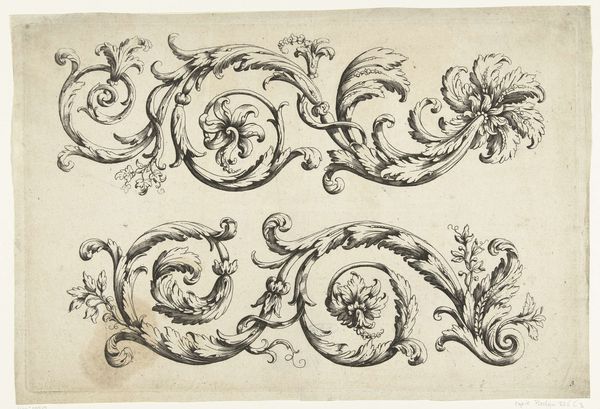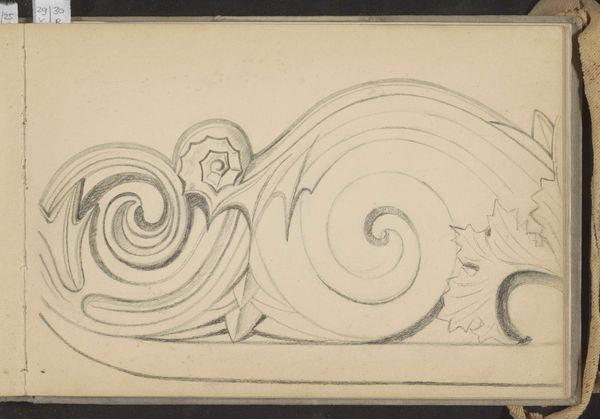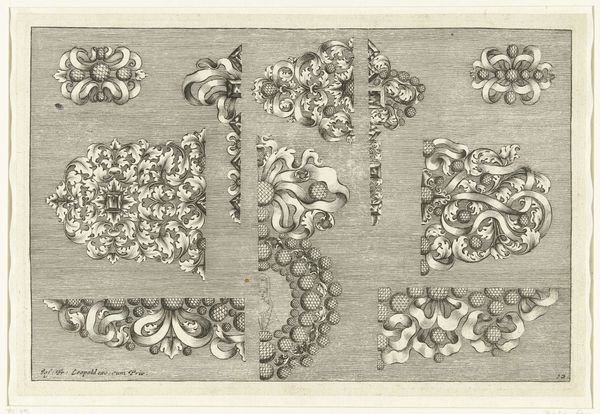
Dimensions: height 200 mm, width 296 mm
Copyright: Rijks Museum: Open Domain
This print showing two ornamental borders was made by Placido Columbani, likely in the late 18th century. We see classical motifs adapted and transformed into something new. But how do such patterns become so widespread? We should understand Columbani's print as part of a larger industry, in which designs were developed and circulated, both informing and reflecting fashionable taste. It's hard to know exactly when it was made because prints like these were often compiled into books and sold over a number of years. Publishers’ addresses can often provide clues. In this case the print was produced for a publisher based in Holborn, near Chancery Lane, an area of London known for its book trade. Historians of art and design use trade directories and other records to understand such patterns of production and consumption. They allow us to see how art, even something as apparently minor as an ornamental border, is thoroughly embedded in social and institutional structures.
Comments
No comments
Be the first to comment and join the conversation on the ultimate creative platform.
